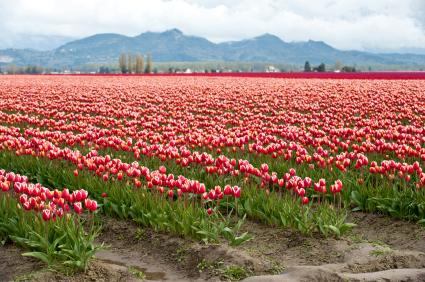| Complexity level: | 6 |
| Project cost ($): | 10 |
| Time required: | 1 hour to prepare, 10 days for observation |
| Material availability: | Easily found |
| Safety concerns: | None |
Hypothesis
As the population of plants in soil increases, the rate growth of the plants will be reduced.
Overview
Plant density
Seeds need soil, heat, oxygen and water to germinate. Initially the food required for the seed to germinate is stored in the seed. As the seed starts to germinate, the roots will start to grow towards the soil and the sprout will grow upwards. As the first tiny leaves appear, photosynthesis is started.
In the next stage of growth the plant starts to compete for water and nutrients in the soil and also for sunlight and carbon dioxide above. Seeds that are planted too close to one another are known to grow taller initially to compete for sunlight. However this growth will not last long because as they grow bigger, the plants will have to compete for other resources in the soil like space for roots, water and nutrients.
In most cases, a high plant density will cause the plants to experience malnutrition, have stunted growth and eventually die. This is why in plantations the spacing between plants and plant density is always controlled to produce better yields.
Scientific Terms
Materials
The materials required for this science fair project:
- 1 packet of garlic chives seeds
- 5 pots
- enough soil to fill the 5 pots
- Water
- Ruler (1 meter)
Procedure
1. For this experiment, the independent variable is the number of plants planted in the pots. The dependent variable is the height of plants. This is determined by measuring the height of the plants in each pot and calculating the average height. The constants (control variables) are the size of the pot, the amount of soil and the type of plant used.
2. The 5 pots are filled with the same amount of soil. The garlic chives seeds are planted in each pot as described below.
3. The pots are labeled as pot A, pot B, pot C, pot D and pot E.
a. Pot A is planted with 2 garlic chives seeds
b. Pot B is planted with 5 garlic chives seeds
c. Pot C is planted with 10 garlic chives seeds
d. Pot D is planted with 20 garlic chives seeds
e. Pot E is planted with 50 garlic chives seeds
4. The pots are watered twice daily, once in the morning and once in the evening.
5. The height of the plants is measured everyday for 10 days and the average height of the plants in each pot is calculated daily and recorded in the table given below.
Results
It is observed that initially the plants in pots D and E grew faster than the plants in pots A, pot B and pot C. However by day 6 the plants in all the pots had grown to almost the same height. From days 7 onwards, it is observed that the plants in pots A, B and C were taller then the plants in pots D and E.
Use the graph below to plot the results of above observations.
No of seeds |
Average height of plant calculated daily (mm) |
|||||||||
Day 1 |
Day 2 |
Day 3 |
Day 4 |
Day 5 |
Day 6 |
Day 7 |
Day |
Day 9 |
Day 10 |
|
A -2 |
0 |
0 |
4 |
32 |
58 |
80 |
96 |
111 |
127 |
138 |
B -5 |
0 |
0 |
5 |
35 |
60 |
78 |
94 |
107 |
124 |
131 |
C -10 |
0 |
0 |
4 |
38 |
65 |
82 |
98 |
115 |
130 |
140 |
D -20 |
0 |
3 |
12 |
48 |
70 |
86 |
96 |
105 |
117 |
128 |
E -50 |
0 |
4 |
16 |
50 |
68 |
80 |
89 |
96 |
105 |
112 |
Conclusion
The hypothesis that as the population of the plants in soil increases, the growth rate of the plants will be reduced, is proven to be true. Plants that grow in crowded environements will have to compete for water and nutrients. As these resources become scarce, the plants will eventually stop growing and die.
The planning of the amount of space between the plants is important in order to produce better yields from the plantation crops. The plants need space for their roots to grow, as well as sufficient water, nutrients and sunlight.
Also consider
What would happen if the experiment was continued over a longer period?
The experiment can be repeated using different plants like radish or beans. Are some plants able to grow more effectively in tight quarters?
How about changing the mix of plants?
References
Does plant density affect plant growth? - http://www.csun.edu/scied/2-longitudinal/effect_of_plant_density/index.htm
Plant - http://en.wikipedia.org/wiki/Plant
Germination - http://en.wikipedia.org/wiki/Germination

